Welcome to the Naples Metro Art stations: the must-see metro line 1 art
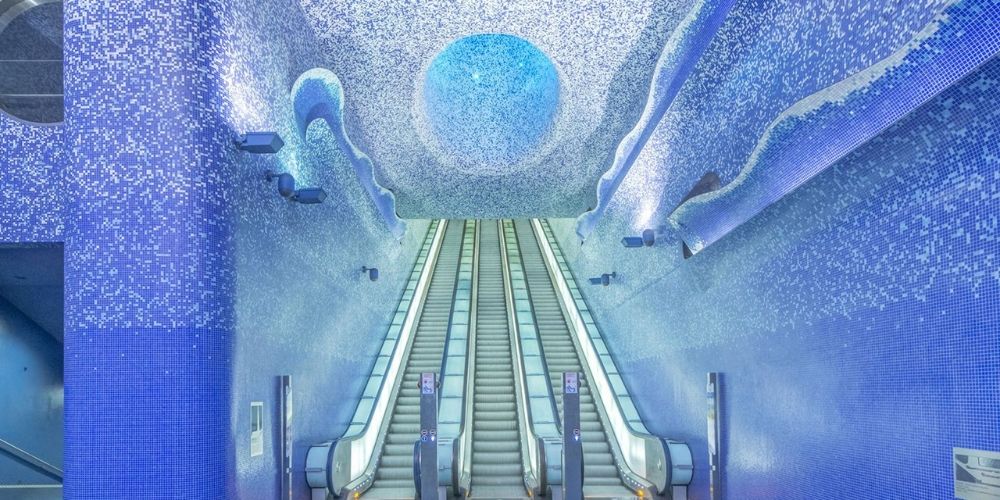
10. Glass, steel and a pyramid: Materdei station
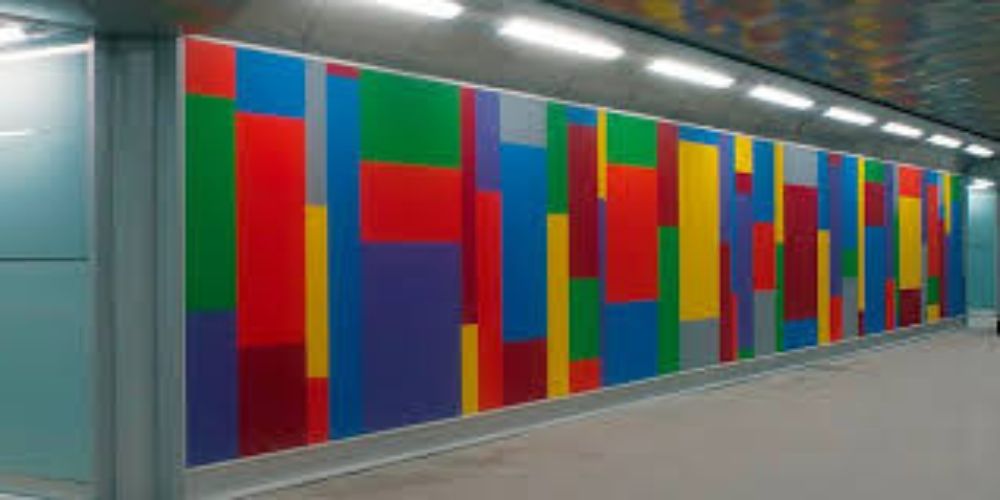
The first stop of our trip through the Naples metro art stations is at the Materdei station. Built by Atelier Mendini, until the construction of the Toledo metro, was probably the most beautiful of the Neapolitan metro stops.
Alessandro Mendini was one of the most respected architects in Italy and the world such as the Daily Telegraph included his station among the top 20 most beautiful metro stations in Europe.
The station is located in a lesser-known area of the city, within the district of the same name, Materdei, and has become a focal point, thanks also to the redevelopment of the square above it, in which the glass and steel pyramid by Mendini himself stands out, acting as a skylight for the station's works of art.
In fact, under the splendid light of Mendini's pyramid are works by famous artists such as a mosaic by Sandro Chia, a high relief by Luigi Ontani and works by Solomon LeWitt.
9. The Quattro Giornate station dedicated to the Neapolitan revolution
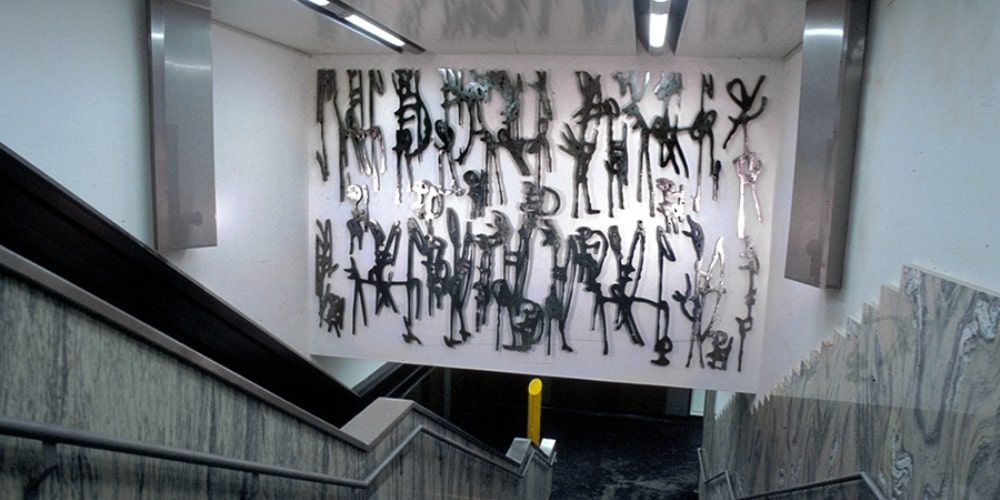
Quattro giornate is the subway station dedicated to the days of the rebellion of the Neapolitan people against the Nazi occupation. Initially, the name of the architect D. Orlacchio's project was "Cilea" but since 2004 the name was changed to honour these days of revolution that started the liberation of Italy from the fascist regime. After this choice, the entire structure was decorated with installations and photographs that recall those glorious days.
Among these artworks, you will find the "Sequenze di guerra e di caccia" by Sergio Fermariello, a well-known Neapolitan painter and sculptor, together with the bas-reliefs and paintings by Nino Longobardi.
It is the only Naples metro line 1 art station that has two well-separated platforms for the two directions to be taken, so be careful not to let yourself be confused by the other artworks such as one of Betty Bee, Baldo Diodato, Umberto Manzo and Anna Sargenti who deal with themes universal compared to those of the aforementioned war.
8. The metro stop of the historic centre: the Museo station
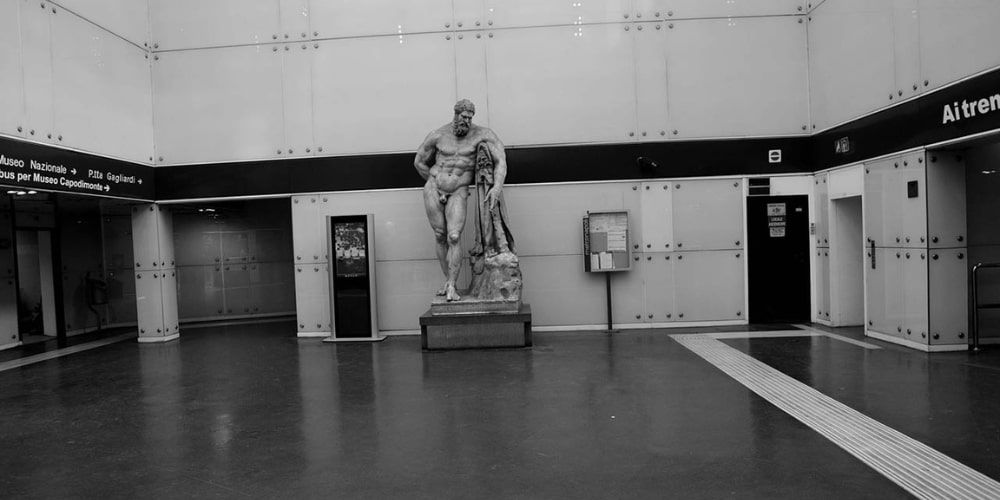
The Museo station is an important hub of the Neapolitan railway line, but it is also a hub for the historical memory of this line. The Museo station recalls in style and colours (Pompeian red) the National Archaeological Museum of Naples (MANN) under which it is. The project was carried out by Gae Aulenti, an Italian architect, very famous so much so that she won the prestigious Tokyo Imperial Prize.
The station was opened in 2000 and as soon as you see it, it will present itself to you as an extension of the Archaeological Museum. Gae Aulenti, in fact, has created concrete and steel entrance pavilions that house copies of works in the MANN.
Historical memory is such a fundamental element of this stop that from the upper entrance, after passing the copy of the Laocoon and the photographic reproductions by Mimmo Jodice, you will find the Neapolis Station, an exhibition of all the relics found during the works of the metro throughout Naples.
7. Dante Station: the redevelopment of a historic square
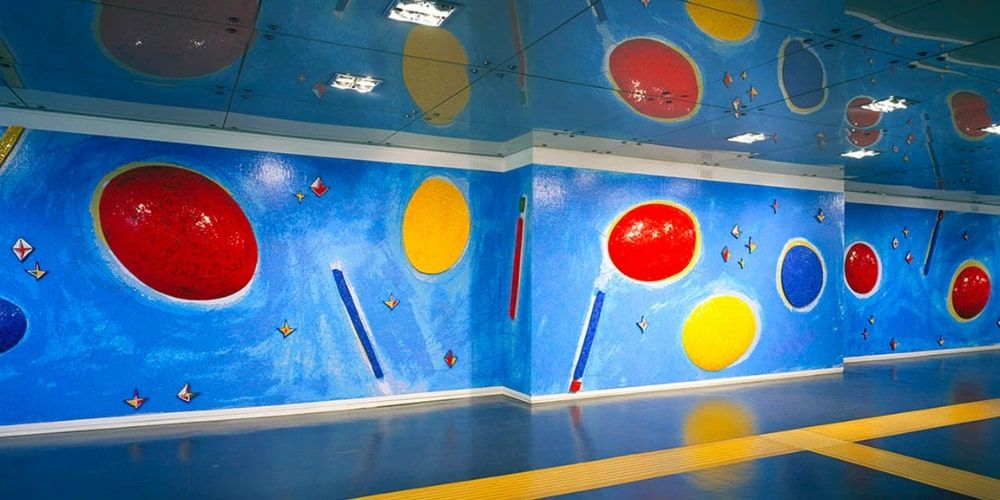
The Dante station is part of the redevelopment process of the entire Piazza Dante. The station looks like two corner pavilions in glass and steel that frame the gigantic statue of Dante. Important Neapolitan, Italian and foreign artists exhibited some artworks under the street level.
They include Jannis Kounellis, author of Senza Titolo, an installation with small beams behind which is placed among other things shoes, a coat, a hat, and Joseph Kosuth that installed a long neon with a piece from Dante's Convivio entitled Queste cose visibili.
Among the other artists stand out Nicola De Maria, Carlo Alfano and Michelangelo Pistoletto, author of Intermediterraneo, a work in which the profile of the Mediterranean basin is traced.
6. The metro line 1 art on the edge of Vomero: Vanvitelli station
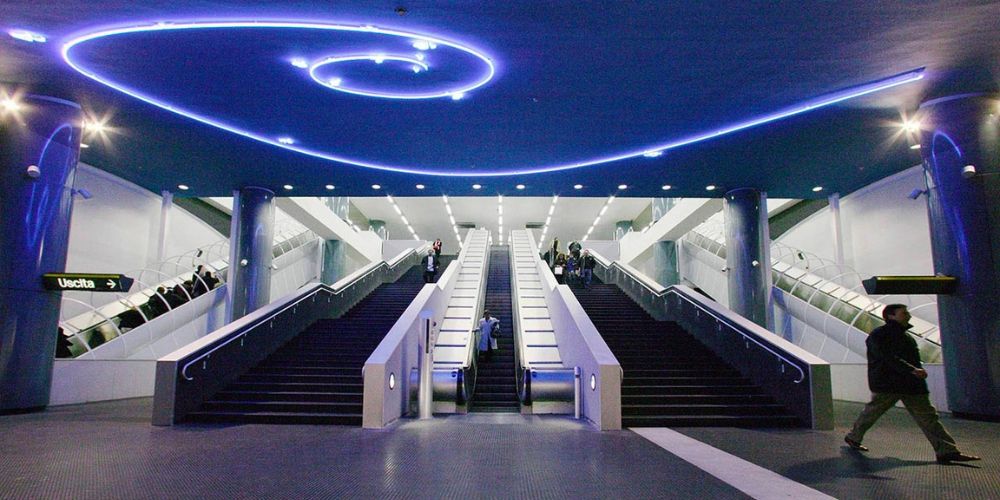
We go back to the Vomero for our Naples metro art stations tour and we discover the Vanvitelli station. It was completed in 1993 on a project by the well-known Neapolitan architect Michele Capobianco.
In 2004 it underwent a restyling by Capobianco with the artistic support of Achille Bonito Oliva. The hilly subway stop has the entrances in all four corners of the homonymous Piazza Vanvitelli.
Various installations characterize entrance space. What strikes our attention most is the boulder that creates the illusion of breaking the glass enclosure that holds it by Giulio Paolini, followed by the magnificent luminous spiral by Mario Merz, which recalls the succession of the Fibonacci series that accompanies us to the quay, where you find two mosaic artwork by Isabella Ducrot.
5. The Central Station: shopping in Garibaldi Station
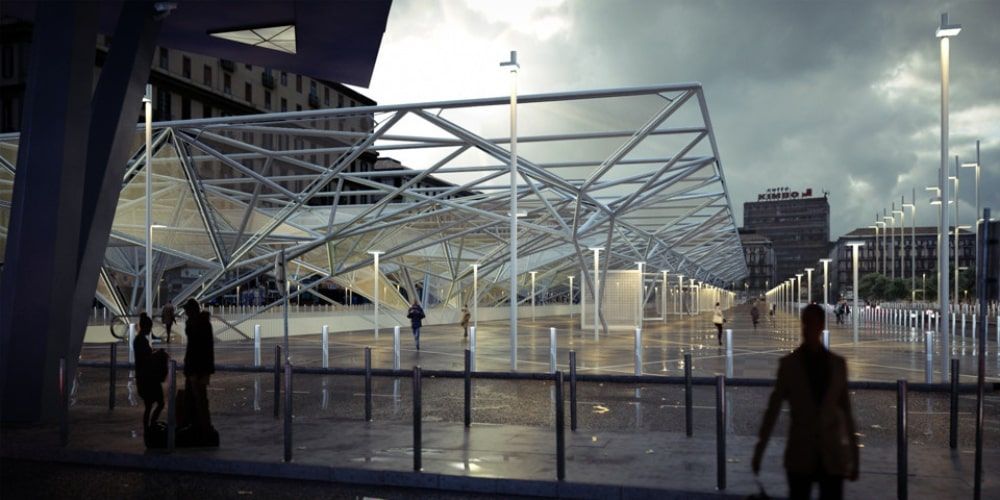
Garibaldi station was designed by the French architect and urban planner Dominique Perrault and inaugurated in 2013. The focal point of this stop is the large underground shopping arcade. On 24 April 2015, the underground connection tunnel connecting the metro station with the Central Station was inaugurated.
A long steel pergola made a roof with perforated Teflon panels that create a sort of artificial forest. The long steel pillars recall the trees while the Teflon sheets allude to the tree crowns. Upon entering the station you will notice a deep pit where escalators cross suspended in the void. Almost at the level of the docks, there are two artistic installations by Michelangelo Pistoletto.
4. Municipio: the metro line 1 art station born from historical excavations
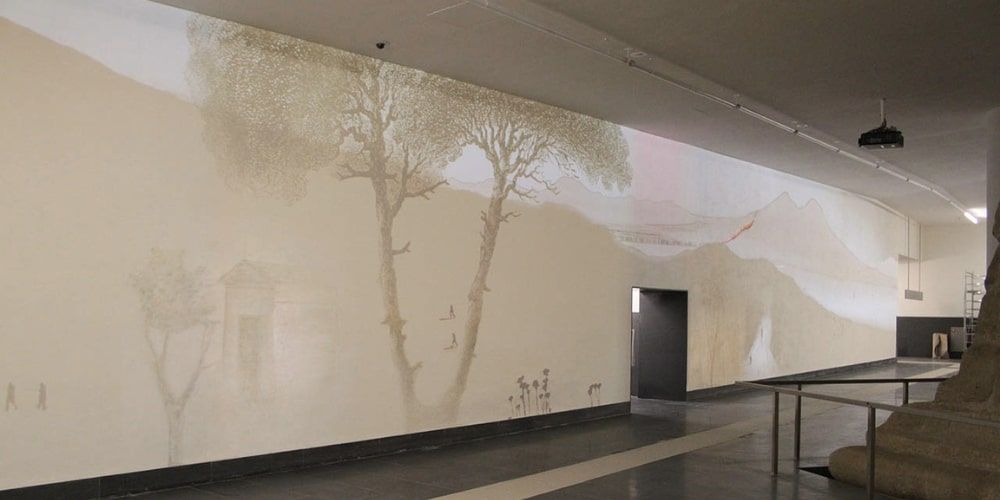
The Municipio station is one of the last to be built in Naples. The entire urban layout is designed by two world-famous architects: Alvaro Siza and Eduardo Souto Souto de Moura.
Located near the City Hall and the port, it blends minimalistic elegance with archaeological depth, thanks to the visible ruins of the ancient Roman port unearthed during construction.
Interestingly, the same Portuguese architects were also responsible for the design of the Municipio Station on Metro Line 6, recently inaugurated. This new addition complements and enhances the original vision, creating a seamless architectural dialogue between the two lines.
The result is a striking urban hub where history, contemporary design, and functionality coexist in perfect harmony. It’s such a true symbol of Naples’ ongoing commitment to turning transit spaces into cultural landmarks.
3. Centro Direzionale: the New Jewel of Naples Metro Line 1 Art
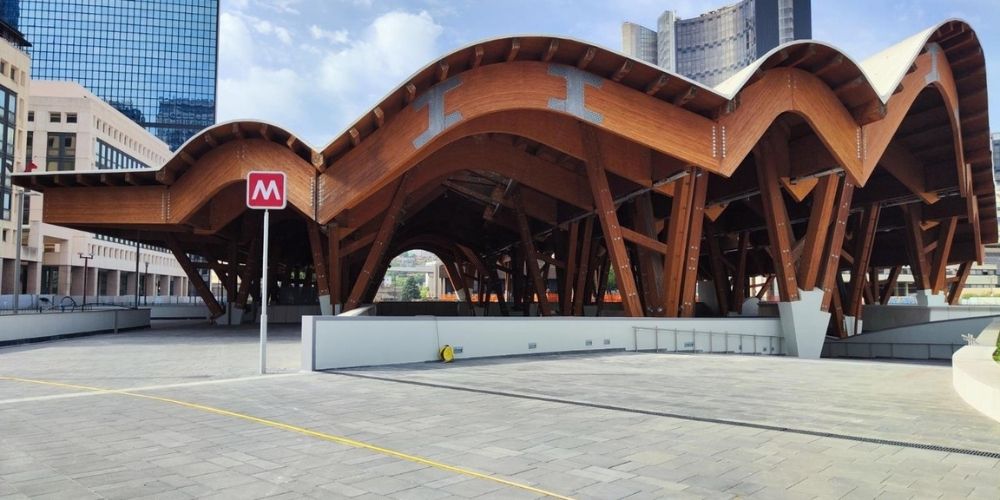
2. Università Station between colours and three-dimensional effects
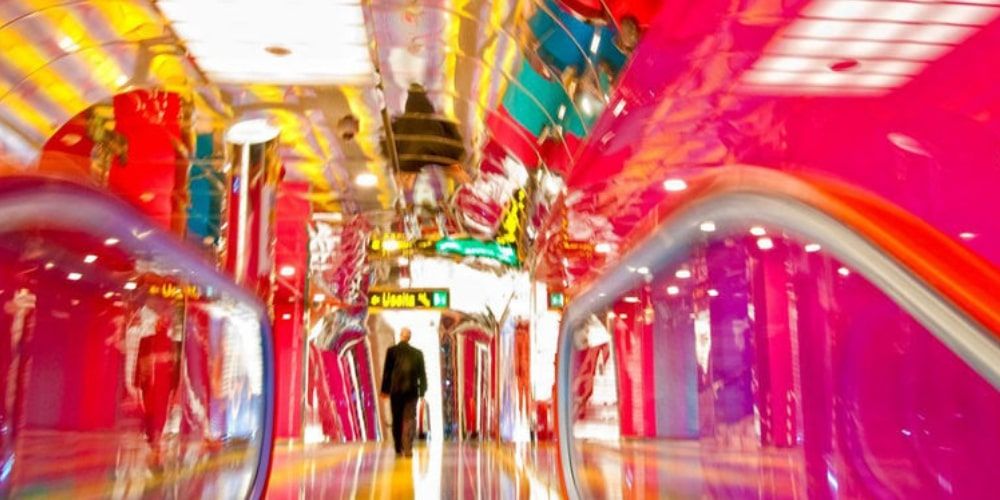
The Università station was built by the same architect as the Materdei station, Alessandro Mendini with the support of the designer Karim Rashid. The entrances are located in Piazza Bovio, the seat of the Palazzo Della Borsa in Naples and already by entering it you will notice its first peculiarity, being covered with white tiles with the words that have been invented in recent years.
Inside it is presented in Rashid's digipop style, very eclectic and who prefers very bright colours. In fact, at the University stop the most used colours are fuchsia and acid green.
The sculptures designed by the designer himself are also very striking, such as Synapsi, which is intended to recall the human being's neural network. Another work is the Conversational Profile, which are pillars decorated with an infinite profile of Rashid himself. In other areas of the station, optical games and three-dimensional stereoscopic effects decorate the station.
1. Toledo Station: the most beautiful metro station in the world
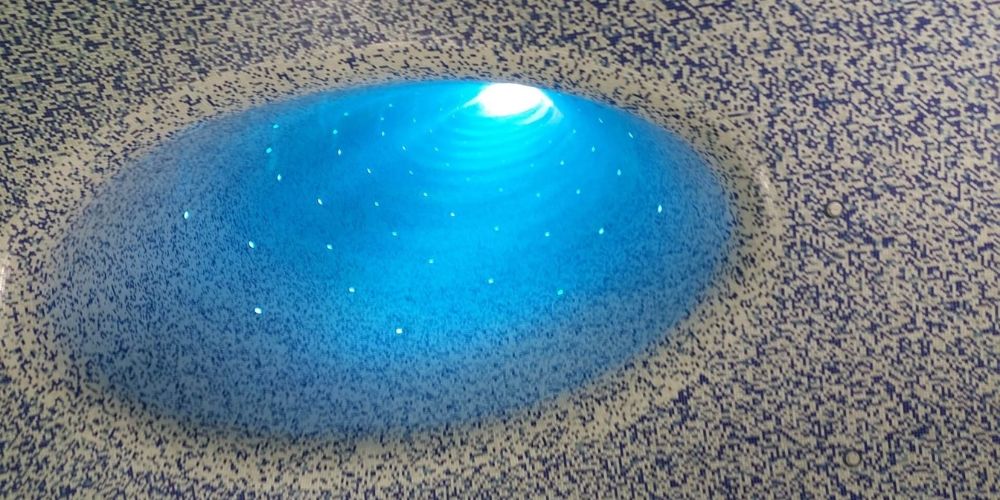
We end our journey discovering the Naples metro art stations describing the most beautiful metro station in the world: Toledo. Since its opening in 2013, it has received awards and prizes from all over the world. It has been named the most beautiful metro in Europe and the world according to the Telegraph and CNN.
Toledo Station was designed by the architect Oscar Tusquets, it manifests its presence on the outside with three polygonal structures covered with blue (sea) and ocher (tuff) tiles that act as a skylight.
Inside, the structure is characterised by large mosaic surfaces by William Kentridge and Costantino Aureliano Buccolieri. The mosaics often depict scenes of Neapolitan life, full of people, including San Gennaro, scenes of Pompeian life and Vesuvius. Immediately after the first room in which the ochre colour of the mosaic covering dominates, one passes into the Sea Gallery by Bob Wilson.
The first room is completely mosaic-covered with marine motifs. Other rooms are decorated with photographs taken by Oliviero Toscani depicting the faces of Neapolitan citizens who wanted to participate in the initiative. It’s an unbelievable work of art, not just a Metro Station!
How to plan your Metro Art Tour
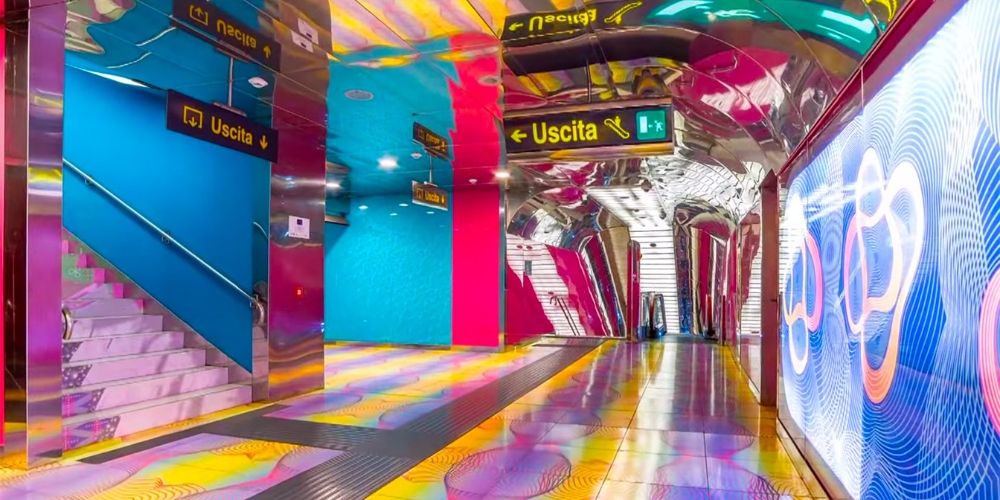
Ready to explore the Naples Metro Art Stations like an insider? Join a guided tour, available free or paid, along Line 1 (Toledo, Università, Municipio, Dante) and Line 6. Every week, ANM offers a free Metro Art Tour (90 min), only requiring a metro ticket (€1.50 single-ride or €4.50 day-pass).




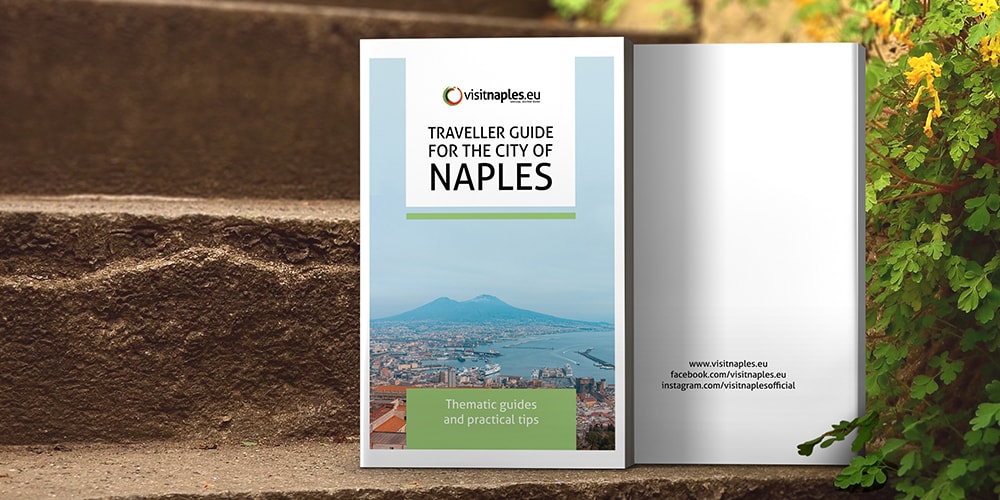
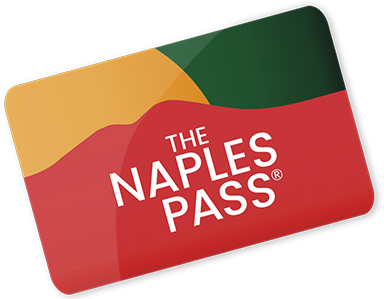

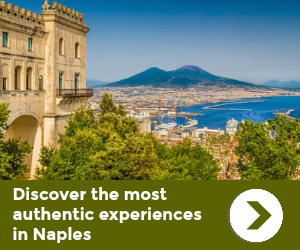


Lascia un commento